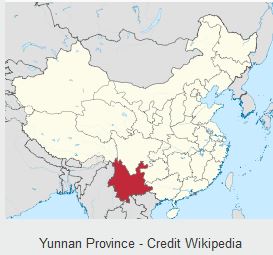#13,869
Macao's Health Bureau has posted what appears to be the first acknowledged H9N2 case of 2019 - reported to them by Chinese authorities - involving an 8 year old female in Yunnan Province.
In 2018, China reported 7 human cases (see FluTrackers List), although given the limited surveillance and testing, the actual number is likely far higher. Serological studies suggest human infection occurs more often than official case counts would have us believeThe relevant portion of the announcement reads:
Yunnan confirmed case of human infection cases of H9N2 bird flu
source: Health Bureau
Release date: At 19:09 on February 15 2019
Health Bureau today (February 15) received the Mainland health authorities notified, Yunnan Province confirmed case of human infection of H9N2 avian influenza. According to the briefing refers the patient was an 8-year-old female student, now living in Lushui City, Yunnan Province, on January 27 symptoms, are less severe.
(Continue . . . .)
Admittedly, not much in the way of details, but we may get more in the next WHO update. Two weeks ago we saw a belated announcement of a case from December 2018 (see Taiwan CDC Notified Of Human H9N2 Case In Hunan Province, China).
Avian H9N2 can be found in poultry across much of Asia and parts of the Middle East, and is famous for its ability to mix its genes (via reassortment) with other viruses in order to produce new - potentially dangerous - new hybrids (see J. Virology:Genetic Compatibility of Reassortants Between Avian H5N1 & H9N2 Influenza Viruses).
Despite relatively few reported human infections - which have been generally mild or moderate - H9N2 viruses continue to evolve, and are showing signs of better adaptation to mammalian hosts (see Virology: Receptor Binding Specificity Of H9N2 Avian Influenza Viruses).So, while H9N2 may not be at the top of our pandemic threats list, it is regarded as having at least some pandemic potential (see CDC IRAT SCORE), several candidate vaccines have been developed, and it continues continues to evolve and interact with other avian viruses.
